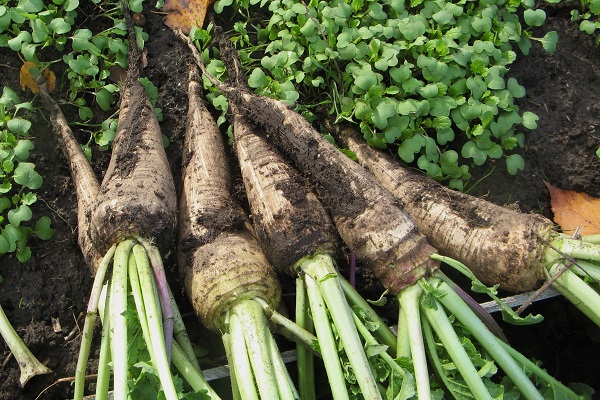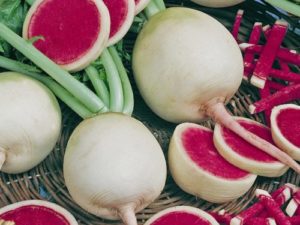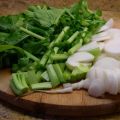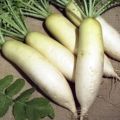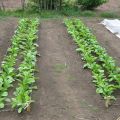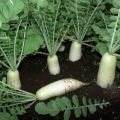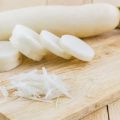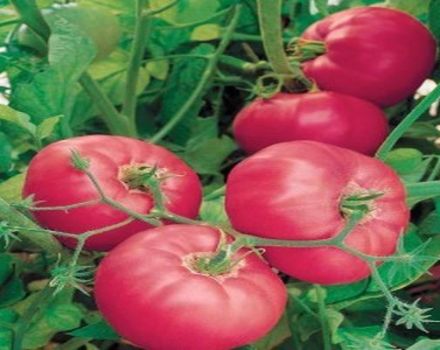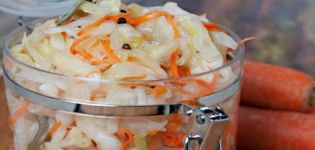When and how to plant and grow a daikon in the open field in the Moscow region
Growing a daikon in the open field in the Moscow region requires compliance with certain recommendations on the timing of planting, site selection, soil preparation, agrotechnical techniques and other nuances. The climate near Moscow is not quite suitable for growing daikon, so you need to be prepared for some difficulties associated with changing weather.
The vegetable culture of the cruciferous family fell in love with many gardeners due to the gentle, relieved bitterness, pulp with a high content of nutrients.
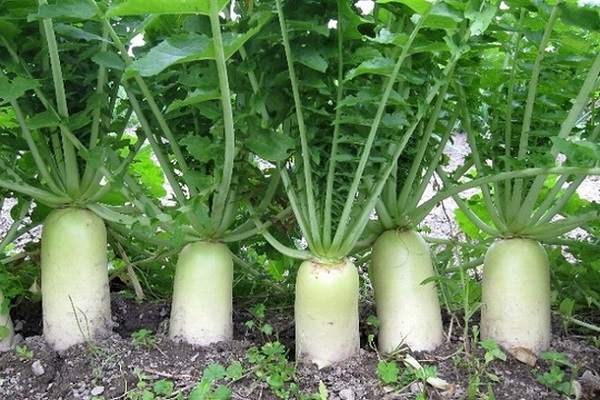
Dates of sowing daikon in the suburbs
One of the first questions when growing a daikon in the Moscow region household plots is the question: when should you plant? Spring sowing occurs in March or early April. It will be possible to enjoy the vitamin salad already in May. When the temperature drops below -10 degrees, it will be necessary to organize a shelter for this type of radish using a spunbond or film. The disadvantage of early landing is the lack of keeping quality.
The fruits are not suitable for storage and are consumed immediately after harvest. If the goal is to collect seeds, you need sow daikon in April-May.
The optimal time for planting a vegetable in the middle lane is July-early August. This is due to the reduction in daylight hours, which leads to the rapid growth of the root crop and the minimum possibility of ejection of flower arrows. Summer daikon is stored for up to five months.

Selection and preparation of a site for sowing
Daikon is grown in a well-lit, draft-free place. The July sowing is carried out on the ridges, where earlier vegetables or greens grew, avoiding cruciferous predecessors and neighbors. It is better to pay attention to the areas freed from onions, garlic, peas, dill, potatoes, cucumbers, lettuce.
The yield of Japanese radish increases when it is cultivated on sandy loam or loam with neutral acidity and increased friability.
The earth is deeply dug up in autumn or early spring, with the simultaneous introduction of compost or humus at the rate of one kilogram per square meter, ammonium sulfate and potassium sulfate: 20 grams per square meter and superphosphate - 40 grams. In no case should not rotted manure be used, which slows down the growth of root crops and impairs the taste. The acidity of the soil is reduced with the help of chalk, lime, wood ash, dolomite flour, scattered on the site 14 days before the application of the above fertilizers.
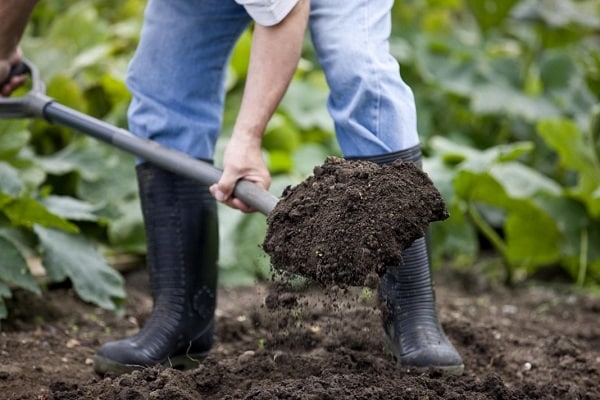
Seed selection
The cool climate dictates the use of daikon varieties with a short growing season. For example:
- Minovase.Drought resistance, non-susceptibility to temperature extremes. The crop is ready for harvest in two months from the moment of germination. Fruits reach a length of 40-50 cm.
- Big bull. Ripens in 60 days, grows well in high humidity and cool weather.
- Nerima. Consumer maturity occurs 65 days after sowing. Distinctive feature: pickling variety.
- Ninengo. Ideal for cultivation in the Moscow region: it is not afraid of short-term cold snaps and fungal diseases.
- Russian size. Ripening period for large roots: 50 days. It does not lose its sharpness and juiciness during long-term storage, it has a rich harvest.
- Miyashige. The growing season is 70 days. The formation of even root crops is facilitated by deep digging of the ridge before planting.
- Minovase Summercross. A hybrid variety that grows up to 4 kg in 40 days. Drought tolerant, cultivated for personal and commercial use.
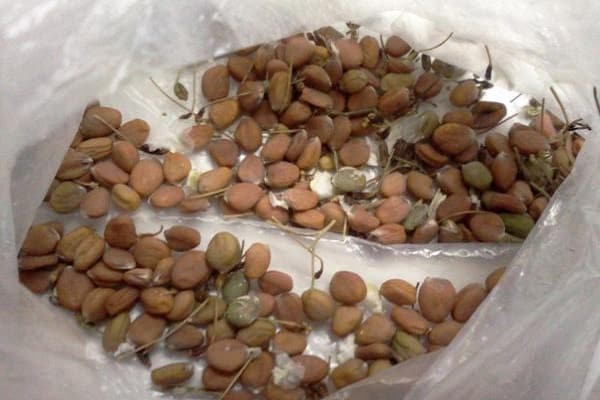
Planting daikon in open ground
Preparation of seed material for sowing includes several stages:
- placing seeds in a tissue bag;
- exposure in water with a temperature of 50-60 degrees above zero for 15 minutes, followed by placing in cold water for the same time, and then in the refrigerator for a day.
There are two methods for planting Japanese radish in open ground:
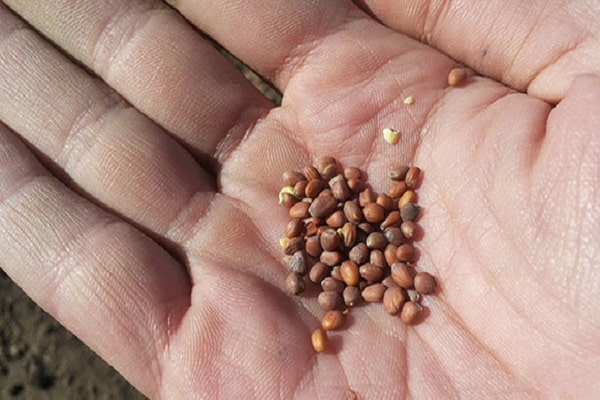
- Into wet furrows with a row spacing of 50–60 cm and a plant spacing of 20 cm, with a seed depth of 3–4 cm.
- In the holes with the addition of compost, according to the scheme 25x25 cm. Several seeds are laid to a depth of 4–5 cm.
The decomposed daikon seeds are sprinkled with soil, wood ash, the beds are mulched.
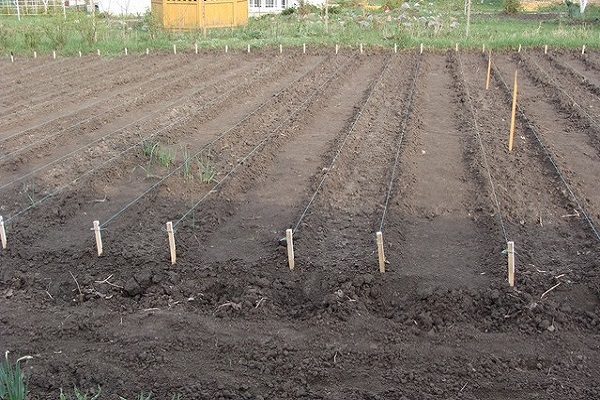
Daikon care rules
The radish is unpretentious in care, but you need to follow the recommendations on agricultural technology, which includes watering, weeding, fertilization, prevention of pests and diseases.
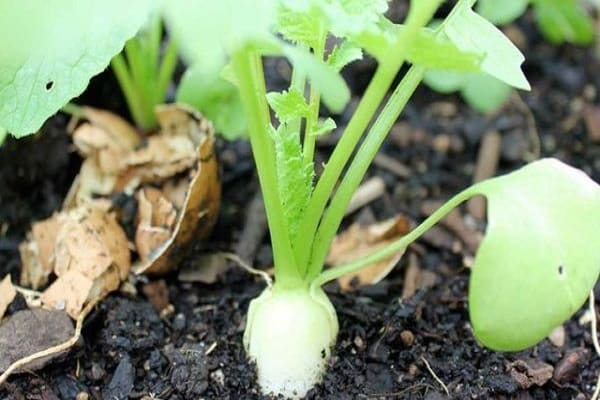
Watering
Daikon loves water, but excessive moisture leads to gray rot or mucous bacteriosis. Water the plants every five days, making sure that the water does not stagnate. In rainy weather, additional soil moisture is not required. In the heat, the amount of watering should be increased and the soil should be mulched. Lack of moisture responds with cracking of root crops, a decrease in taste, and a rough skin.
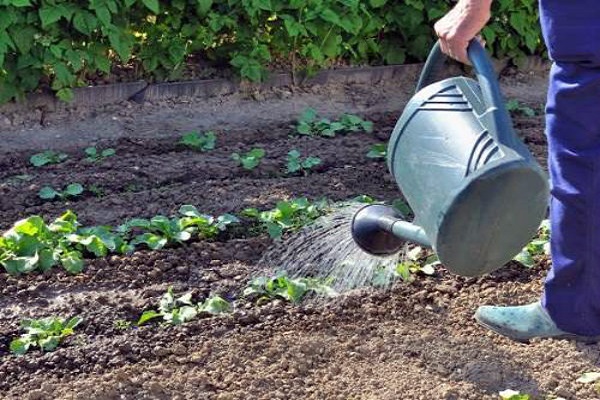
Weeding
In order to increase the air permeability of the soil, after each irrigation of the daikon, the row spacings are loosened. Weed plants are removed in a timely manner, because they can cause pests and diseases. Regular hilling of the radish will not allow the vegetable pulp to acquire bitterness.
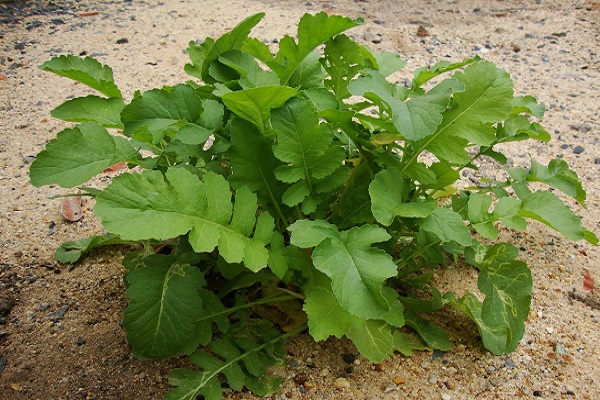
Fertilizers
The degree of soil fertility determines the amount of fertilizing. Rich soils need not be fertilized, this will not affect the crop yield. For scarce soil, a special feeding scheme has been developed:
- in the beginning - 25 g of urea per bucket of water;
- in the middle - complex mineral fertilizer;
- at the end - a fertilizer containing potassium and phosphorus.
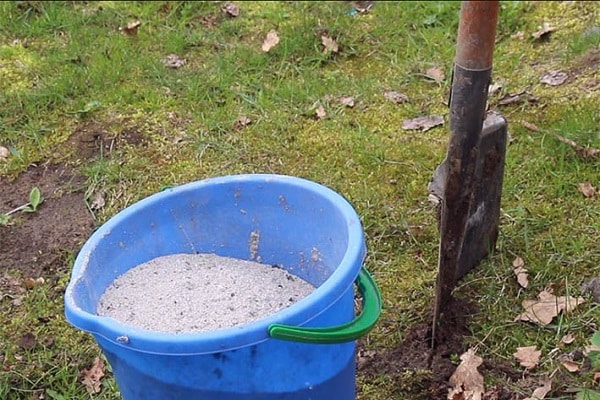
Diseases
Diseases of Japanese radish occur as a result of improper care, violation of sowing dates, insufficient or excessive watering. Neglect of agrotechnical measures cause keel, mosaic, black leg, gray rot, destroying most of the crop. The first signs of disease serve as a signal for the use of specialized drugs.
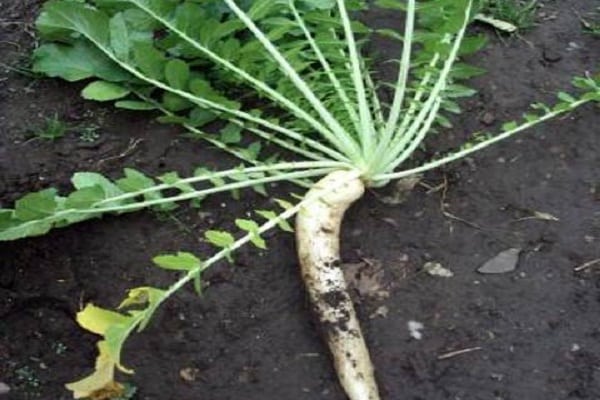
Pests
Of the pests, the garden scoop can inflict significant damage to the daikon, damaging the roots and leaves of the plant. This leads to a slowdown in fruit development and a deterioration in appearance. The insect is frightened off by the tincture of red pepper, which is watered with plants: insist six pods in a liter of hot water for 12 hours and combine with 10 liters of water.
Hot weather provokes a cruciferous flea attack. The long growing season makes it possible not only to sprinkle plantings with ash, but also to carry out treatment with insecticidal preparations. The onset of cool, rainy weather causes the insect to disappear.
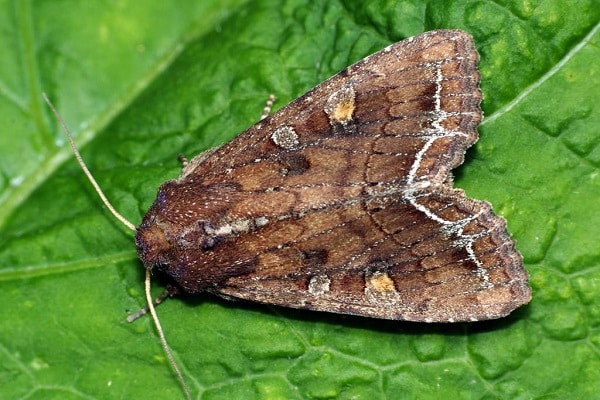
Harvesting and storage
The ripening time of the daikon when grown in the open field in the Moscow region varies depending on the variety of the crop and the established weather. On average, they start harvesting 40–70 days after sowing, pulling out the roots by the leaves or digging them with a pitchfork or a shovel.
When storing radish daikon should be kept at a temperature not higher than +4 degrees. In this case, the presentation and taste remain unchanged for five months. Sand is poured between the vegetable layers.
Eating daikon is no different from a regular radish. It is eaten fresh, salads are prepared, stewed, added when canning.
